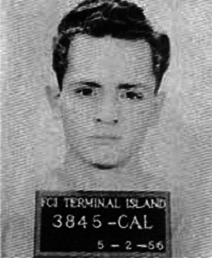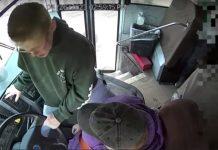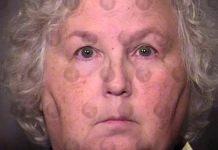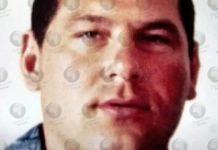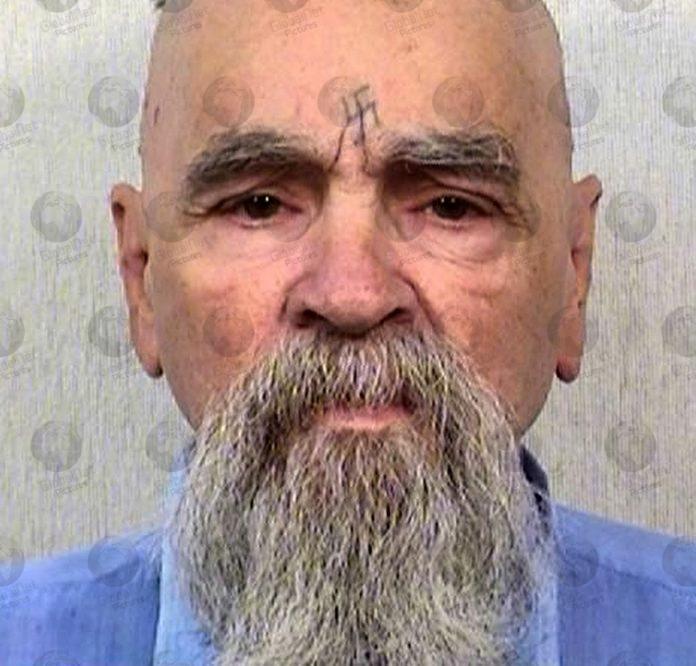
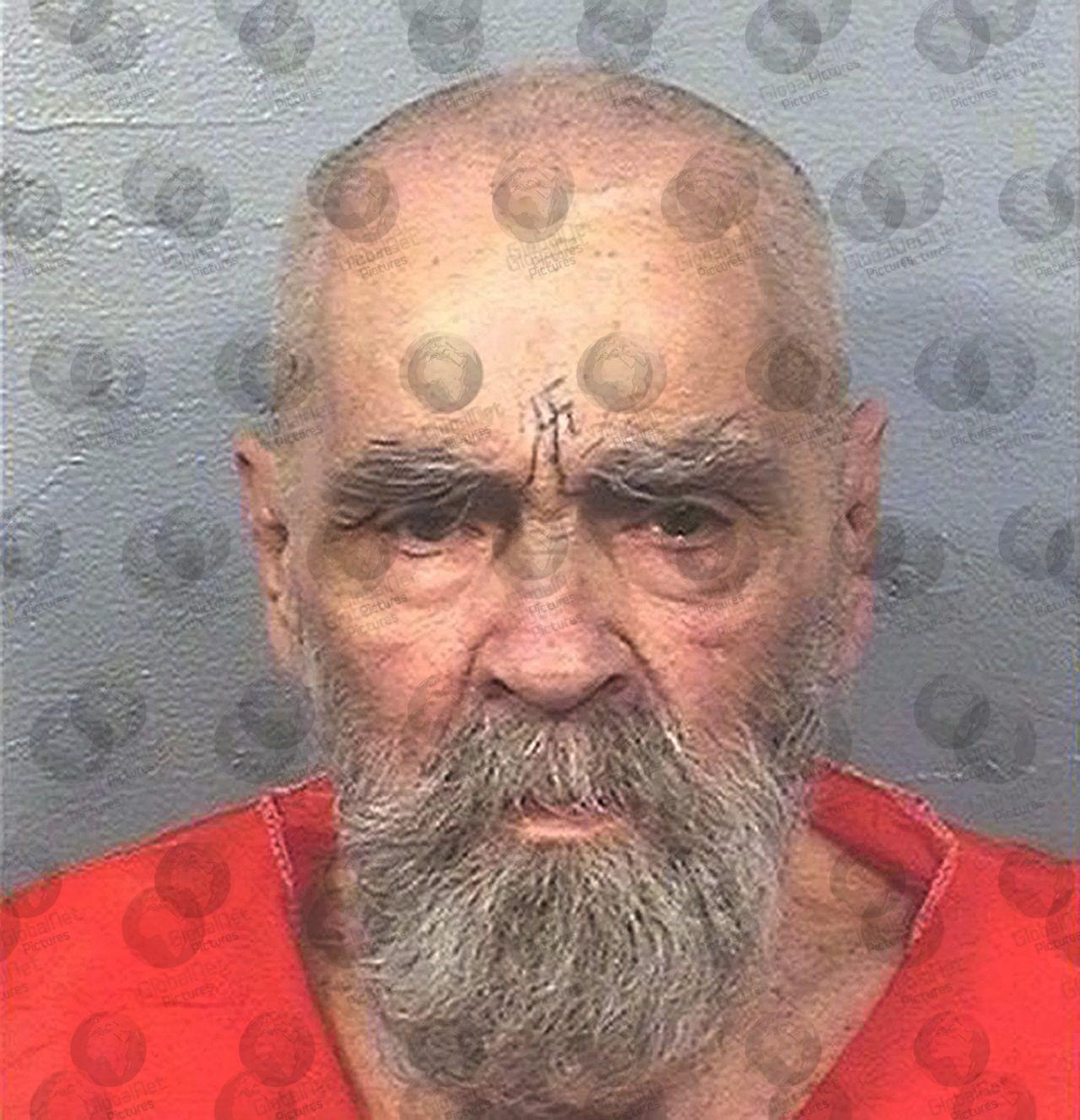
The Manson Family – a murder cult
Charles Manson (November 12, 1934 – November 19, 2017) was an American criminal, cult leader and musician. In mid-1967, he began forming what became known as the Manson Family, a quasi-commune based in California.
Manson’s followers committed nine murders at four locations in July and August 1969. In 1971, he was convicted of first-degree murder and conspiracy to commit murder for the deaths of seven people, all of which members of the group carried out at his instruction. Manson was also convicted of first-degree murder for two other deaths.
At the time the Manson Family began to form, Manson was an unemployed ex-convict who had spent half of his life in correctional institutions for a variety of offenses. Before the murders, he was a singer-songwriter on the fringe of the Los Angeles music industry, chiefly through a chance association with Dennis Wilson, drummer and founding member of the Beach Boys.
In 1968, the group recorded one of Manson’s songs, retitled “Never Learn Not to Love”, as a B-sided single without Manson’s credit. Manson was also obsessed with the Beatles, particularly their 1968 self-titled album (also known as the “White Album”). Guided by his interpretation of the band’s lyrics, he adopted the term “Helter Skelter” to describe an impending apocalyptic race war. He and his followers, who were mostly young women, believed that the murders would help precipitate that war.
From the beginning of Manson’s notoriety, a pop culture arose around him in which he ultimately became an emblem of insanity, violence, and the macabre. After he was charged with the crimes of which he was later convicted, recordings of the songs written and performed by Manson were released commercially, starting with Lie: The Love and Terror Cult (1970). Various musicians have covered some of his songs. Manson was originally sentenced to death, but his sentence was commuted to life with the possibility of parole after California invalidated the state’s death penalty statute in 1972. He served out his life sentence at California State Prison in Corcoran and died at age 83 in late 2017.
Childhood
Charles Manson was born on November 12, 1934 to 16-year-old Kathleen Manson-Bower-Cavender, née Maddox (1918–1973), in Cincinnati, Ohio. He was first named “no name Maddox”. Within weeks, he was called Charles Milles Maddox.
Manson’s biological father appears to have been Colonel Walker Henderson Scott Sr. (1910–1954) against whom Kathleen Maddox filed a paternity suit that resulted in an agreed judgement in 1937. Manson may never have known his biological father. Scott worked intermittently in local mills, and also had a local reputation as a con artist. He allowed Maddox to believe he was an army colonel, although “Colonel” was merely his given name. When Maddox told Scott she was pregnant, he told her he had been called away on army business; after several months she realised he had no intention of returning.
In August 1934, before Manson’s birth, Maddox married William Eugene Manson (1909–1961), whose occupation was listed on Charles’s birth certificate as a “laborer” at a dry cleaning business. Maddox went on drinking sprees for days at a time with her brother Luther, leaving Charles with a variety of babysitters. They were divorced on April 30, 1937, when a court accepted Manson’s charge of “gross neglect of duty”.
On August 1, 1939, Maddox and Luther’s girlfriend Julia Vickers spent the evening drinking with Frank Martin, a new acquaintance who appeared to be wealthy. Maddox and Vickers decided to rob him, and Maddox phoned her brother to help. They were incompetent thieves, and were found and arrested within hours. At the trial seven weeks later, Luther was sentenced to ten years in prison, and Kathleen was sentenced to five years. Manson was placed in the home of an aunt and uncle in McMechen, West Virginia. His mother was paroled in 1942. Manson later characterised the first weeks after she returned from prison as the happiest time in his life.
Manson’s family moved to Charleston, West Virginia, where Manson continually played truant and his mother spent her evenings drinking. She was arrested for grand larceny, but not convicted. After moving to Indianapolis, Maddox started attending Alcoholics Anonymous meetings where she met an alcoholic named Lewis (no first name), whom she married in August 1943. As well as constantly playing truant, Manson began stealing from stores and his home. In 1947, Maddox looked for a temporary foster home for Manson, but she was unable to find a suitable one. She decided to send him to the Gibault School for Boys in Terre Haute, Indiana, a school for male delinquents run by Catholic priests. Manson soon fled home to his mother, but she took him back to the school. He spent Christmas 1947 in McMechen, at his aunt and uncle’s house, where he was caught stealing a gun.
Early crimes
Manson returned to Gibault but ran away to Indianapolis ten months later. Instead of returning to his mother, he rented a room and supported himself by burgling stores at night. He was eventually caught, and a sympathetic judge sent him to Boys Town, a juvenile facility in Omaha, Nebraska. After four days, he and a student named Blackie Nielson stole a car and somehow obtained a gun. They used it to rob a grocery store and a casino, as they made their way to the home of Nielson’s uncle in Peoria, Illinois.
Neilson’s uncle was a professional thief, and when the boys arrived he apparently took them on as apprentices. Manson was arrested two weeks later during a nighttime raid on a Peoria store. In the investigation that followed, he was linked to his two earlier armed robberies. He was sent to the Indiana Boys school, a strict reform school. He later claimed that other students raped him with the encouragement of a staff member. Manson developed a self-defence technique he later called the “insane game”. When he was physically unable to defend himself he would screech, grimace and wave his arms to convince aggressors that he was insane. After a number of failed attempts, he escaped with two other boys in February 1951.
The three escapees were attempting to drive to California in stolen cars when they were arrested in Utah. They had robbed several filling stations along the way. Driving a stolen car across state lines is a federal crime that violates the Dyer act. Manson was sent to Washington, D.C.’s National Training School for Boys. On arrival he was given aptitude tests. He was illiterate, and his IQ was 109 (the national average was 100). His case worker deemed him aggressively antisocial.
Jail time
On a psychiatrist’s recommendation, Manson was transferred in October 1951 to Natural Bridge Honor Camp, a minimum security institution. His aunt visited him and told administrators she would let him stay at her house and would help him find work. Manson had a parole hearing scheduled for February 1952. However, in January, he was caught raping a boy at knifepoint. Manson was transferred to the Federal Reformatory in Petersburg, Virginia. There he committed a further “eight serious disciplinary offences, three involving homosexual acts”. He was then moved to a maximum security reformatory at Chillicothe, Ohio, where he was expected to remain until his release on his 21st birthday in November 1955. Good behavior led to an early release in May 1954, to live with his aunt and uncle in McMechen.
In January 1955, Manson married a hospital waitress named Rosalie Jean Willis. Around October, about three months after he and his pregnant wife arrived in Los Angeles in a car he had stolen in Ohio, Manson was again charged with a federal crime for taking the vehicle across state lines. After a psychiatric evaluation, he was given five years’ probation. Manson’s failure to appear at a Los Angeles hearing on an identical charge filed in Florida resulted in his March 1956 arrest in Indianapolis. His probation was revoked; he was sentenced to three years’ imprisonment at Terminal Island, San Pedro, California.
While Manson was in prison, Rosalie gave birth to their son Charles Manson Jr. During his first year at Terminal Island, Manson received visits from Rosalie and his mother, who were now living together in Los Angeles. In March 1957, when the visits from his wife ceased, his mother informed him Rosalie was living with another man. Less than two weeks before a scheduled parole hearing, Manson tried to escape by stealing a car. He was given five years’ probation and his parole was denied.
Manson received five years’ parole in September 1958, the same year in which Rosalie received a decree of divorce. By November, he was pimping a 16-year-old girl and was receiving additional support from a girl with wealthy parents. In September 1959, he pleaded guilty to a charge of attempting to cash a forged U.S. Treasury check, which he claimed to have stolen from a mailbox; the latter charge was later dropped. He received a 10-year suspended sentence and probation after a young woman named Leona, who had an arrest record for prostitution, made a “tearful plea” before the court that she and Manson were “deeply in love … and would marry if Charlie were freed”. Before the year’s end, the woman did marry Manson, possibly so she would not be required to testify against him.
Manson took Leona and another woman to New Mixico for purposes of prostitution, resulting in him being held and questioned for violating the Mann Act. Though he was released, Manson correctly suspected that the investigation had not ended. When he disappeared in violation of his probation, a bench warrant was issued. An indictment for violation of the Mann Act followed in April 1960. When one of the women was arrested for prostitution, Manson was arrested in June in Laredo, Texas, and was returned to Los Angeles. For violating his probation on the check-cashing charge, he was ordered to serve his ten year sentence.
Manson spent a year trying unsuccessfully to appeal the revocation of his probation. In July 1961, he was transferred from the Los Angeles County Jail to the United States Penitentiary at McNeil Islans, Washington. There, he took guitar lessons from Barker-Karpis gang leader Alvin “Creepy” Karpis, and obtained a contact name of someone at Universal Studios in Hollywood from another inmate, Phil Kaufman. According to Jeff Guinn’s 2013 biography of Manson, his mother moved to Washington State to be closer to him during his McNeil Island incarceration, working nearby as a waitress.
Although the Mann Act charge had been dropped, the attempt to cash the Treasury check was still a federal offence. Manson’s September 1961 annual review noted he had a “tremendous drive to call attention to himself”, an observation echoed in September 1964. In 1963 Leona was granted a divorce. During the process she alleged that she and Manson had a son, Charles Luther. According to a popular urban legend, Manson auditioned unsuccessfully for the Monkees in late 1965; this is refuted by the fact that Manson was still incarcerated at McNeil Island at that time.
In June 1966, Manson was sent for the second time to Terminal Island in preparation for early release. By the time of his release day on March 21, 1967, he had spent more than half of his 32 years in prisons and other institutions. This was mainly because he had broken federal laws. Federal sentences were, and remain, much more severe than state sentences for many of the same offences. Telling the authorities that prison had become his home, he requested permission to stay.
The start of his cult following and the murder of Sharon Tate
Once discharged from prison, Manson began attracting a group of followers, mostly young women, from around California. They were later dubbed the “Manson Family”. The group was involved in the murder of Gary Hinman in July 1969, then gained national notoriety after the murder of actress Sharon Tate and four others in her home on August 8 and 9, 1969, and Leno and Rosemary LaBianca the next day. Tex Watson and three other members of the Family executed the Tate-LaBianca murders, acting under Manson’s specific instructions. Family members were also responsible for other assaults, thefts, crimes, and the attempted assassination of United States President Gerald Ford in Sacramento by Lynette “Squeaky” Fromme.
On March 6, 1970, (the day the court vacated Manson’s status as his own attorney), LIE, an album of Manson music, was released. This included “Cease to Exist”, a Manson composition the Beach Boys had recorded with modified lyrics and the title “Never Learn Not to Love”. Over the next couple of months only about 300 of the album’s 2,000 copies sold.
Imprisonment
Sentencing
Manson was admitted to state prison from Los Angeles County on April 22, 1971, for seven counts of first-degree murder and one count of conspiracy to commit murder for the deaths of Abigail Ann Folger, Wojciech Frykowski, Steven Earl Parent, Sharon Tate Polanski, Jay Sebring and Leno and Rosemary LaBianca. He was sentenced to death. When the death penalty was ruled unconstitutional in 1972, he was re sentenced to life with the possibility of parole. His original death sentence was modified to life on February 2, 1977.
On December 13, 1971, Manson was convicted of first-degree murder in Los Angeles County Court for the July 25, 1969 death of musician Gary Hinman. He was also convicted of first-degree murder for the August 1969 death of Donald Jerome “Shorty” Shea. A footnote to the conclusion of California v. Anderson, the 1972 decision that neutralized California’s death sentences, stated that, “any prisoner now under a sentence of death … may file a petition for writ of habeas corpus in the superior court inviting that court to modify its judgment to provide for the appropriate alternative punishment of life imprisonment or life imprisonment without possibility of parole specified by statute for the crime for which he was sentenced to death.” This made Manson eligible to apply for parole after seven years’ incarceration. Accordingly, his first parole hearing took place on November 16, 1978, at California Medical Facility in Vacaville, and his petition was rejected.
The Manson interviews
n the 1980s, Manson gave four interviews to the mainstream media. The first, recorded at California Medical Facility and aired June 13, 1981, was by Tom Snyder for NBC’s The Tomorrow Show. The second, recorded at San Quentin State Prison and aired March 7, 1986, was by Charlie Rose for CBS News Nightwatch; it won the national news Emmy Award for Best Interview in 1987. The third, with Geraldo Rivera in 1988, was part of the journalist’s prime-time special on Satanism. At least as early as the Snyder interview, Manson’s forehead bore a swastika in the spot where the X carved during his trial had been.
Nikolas Schreck conducted an interview with Manson for his documentary Charles Manson Superstar(1989). Schreck concluded that Manson was not insane but merely acting that way out of frustration.
On September 25, 1984, Manson was imprisoned in the California Medical Facility at Vacaville when inmate Jan Holmstrom poured paint thiner on him and set him on fire, causing second- and third-degree burns on over 20 percent of his body. Holmstrom explained that Manson had objected to his Hare Krisna chants and verbally threatened him.
After 1989, Manson was housed in the Protective Housing Unit at California State Prison, Corcoran, in Kings County. The unit houses inmates whose safety would be endangered by general population housing. He had also been housed at San Quentin State Prison, California Medical Facility in Vacaville, Folsom State Prison and Pelican Bay State Prison. In June 1997, a prison disciplinary committee found that Manson had been trafficking drugs. That August he was moved from Corcoran State Prison to Pelican Bay State Prison.
Manson’s final years
On September 5, 2007, MSNBC aired The Mind of Manson, a complete version of a 1987 interview at California’s San Quentin State Prison. The footage of the “unshackled, unapologetic, and unruly” Manson had been considered “so unbelievable” that only seven minutes of it had originally been broadcast on The Today Show, for which it had been recorded.
In March 2009, a photograph of Manson showing a receding hairline, grizzled gray beard and hair, and the swastika tattoo still prominent on his forehead was released to the public by California corrections officials.
In 2010, the Los Angeles Times reported that Manson was caught with a cell phone in 2009 and had contacted people in California, New Jersey, Florida and British Columbia. A spokesperson for the California Department of Corrections stated that it was not known if Manson had used the phone for criminal purposes. Manson also recorded an album of acoustic pop songs with additional production by Henry Rollins, titled Completion. Only five copies were pressed: two belong to Rollins, while the other three are presumed to have been with Manson. The album remains unreleased.
Manson’s death
On January 1, 2017, Manson was suffering from gastrointestinal bleeding at California State Prison in Corcoran when he was rushed to Mercy Hospital in downtown Bakersfield. A source told the Los Angeles Times that Manson was seriously ill, and TMZ reported his doctors considered him “too weak” for surgery. He was returned to prison by January 6; whatever treatment he had received was not disclosed.
On November 15, 2017, a source not authorised to speak on behalf of the corrections department confirmed that Manson had returned to a hospital in Bakersfield. In compliance with federal and state medical privacy laws, the California Department of Corrections and Rehabilitation did not confirm this. He died from cardiac arrest resulting from respiratory failure and colon cancer at the hospital four days later on November 19.
Three people stated their intention to claim Manson’s estate and body. Manson’s grandson, Jason Freeman, stated his intent to take possession of Manson’s remains and personal effects. Michael Channels, a pen pal of Manson, has a will, dated February 14, 2002, that leaves Manson’s entire estate plus his body to him. A friend of Manson’s, Ben Gurecki, has a will dated January 2017. It gives the estate and Manson’s body to his alleged son, Matthew Roberts. In 2012, CNN News ran a DNA match to see if Freeman and Roberts were related to each other and found they were not. (Matches between Roberts and Manson were attempted but the results were reportedly “contaminated”.) On March 12, 2018, the Kern County Superior Court in California decided in favour of Freeman in regard to Manson’s body. Freeman had previously said he would have Manson cremated, and, in fact, did so on March 20, 2018.
Religion
In 1974, Manson stated his religion was Scientology, and identified as a Scientologist after studying the religion while incarcerated. Manson completed 150 hours of auditing before declaring Scientology “too crazy”.
Relationships
In 2009, a Los Angeles disk jockey and songwriter named Matthew Roberts released correspondence and other evidence indicating that he might be Manson’s biological son. Roberts’s biological mother claims to have been a member of the Manson Family who left in mid-1967 after being raped by Manson; she returned to her parents’ home to complete the pregnancy, gave birth on March 22, 1968, and put Roberts up for adoption. Manson himself stated that he “could” be the father, acknowledging the biological mother and a sexual relationship with her during 1967, nearly two years before the Family began its murderous phase.
In 2014, it was announced that the imprisoned Manson was engaged to 26-year-old Afton Elaine “Star” Burton and had obtained a marriage license on November 7. Manson personally dubbed Burton with the name “Star”. She had been visiting Manson in prison for at least nine years, and maintained several websites that proclaimed his innocence. The wedding license expired on February 5, 2015, without a marriage ceremony taking place. It was later reported, according to journalist Daniel Simone, the wedding was cancelled after it was discovered Burton only wanted to marry Manson so she and a friend, Craig “Gray Wolf” Hammond, could use his corpse as a tourist attraction after his death. According to Simone, Manson believed he would never die, and may simply have used the possibility of marriage as a way to encourage Burton and Hammond to continue visiting him and bringing him gifts. Together with co-author Heidi Jordan Ley, and with the assistance of some of Manson’s fellow prisoners, Simone wrote a book about Manson and was seeking a publisher for it. Burton said on her web site that the reason the marriage did not take place is merely logistical. Manson was suffering from an infection and had been in a prison medical facility for two months, and could not receive visitors. She said she still hoped the marriage license would be renewed and the marriage would take place.
The mind of dangerous Manson
On April 11, 2012, Manson was denied release at his 12th parole hearing, which he did not attend. After his March 27, 1997 parole hearing, Manson refused to attend any of his later hearings. The panel at that hearing noted that Manson had a “history of controlling behaviour” and “mental health issues” including schizophrenia and paranoid delusional disorder, and was too great a danger to be released. The panel also noted that Manson had received 108 rules violation reports, had no indication of remorse, no insight into the causative factors of the crimes, lacked understanding of the magnitude of the crimes, had an exceptional, callous disregard for human suffering and had no parole plans. At the April 11, 2012 parole hearing it was determined that Manson would not be reconsidered for parole for another 15 years, i.e. not before 2027, at which time he would have been 92 years old.
His legacy
Beginning in January 1970, Manson was embraced by the underground newspapers Los Angeles Free Press and Tuesday’s Child, with the latter proclaiming him “Man of the Year”. In June 1970, he was the subject of a Rolling Stone cover story, “Charles Manson: The Incredible Story of the Most Dangerous Man Alive”. When a Rolling Stone writer visited the Los Angeles District Attorney’s office in preparing that story, he was shocked by a photograph of the bloody “Healter Skelter” that would bind Manson to popular culture. Prosecutor Vincent Bugliosi pointed out the dispute in the underground press over whether Manson was “Christ returned” or “a sick symbol of our times” to his Helter Skelter co-author, Curt Gentry.
Bernadine Dohrn, a leader of the Weather Underground, reportedly said of the Tate murders: “Dig it, first they killed those pigs, then they ate dinner in the same room with them, then they even shoved a fork into a victim’s stomach. Wild!” Neo-Nazi and Manson follower James Mason founded the Universal Order, a group which has influenced alt-right movements such as the neo-Nazi terrorist Atomwaffen Division. Universal Order’s name and logo, a swastika between scales of justice, were remotely designed by Manson.
In an afterword composed for the 1994 edition of the non-fiction book Helter Skelter, Bugliosi quoted a BBC employee’s assertion that a “neo-Manson cult” existing then in Europe was represented by, among other things, approximately 70 rock bands playing songs by Manson and “songs in support of him”.
Manson’s music
There have been several releases of Manson recordings – both musical and spoken. One of these, The Family Jams, includes two compact discs of Manson’s songs recorded by the Family in 1970, after Manson and the others had been arrested. Guitar and lead vocals are supplied by Steve Grogan; additional vocals are supplied by Lynette Fromme, Sandra Good, Catherine Share, and others. One Mind, an album of music, poetry, and spoken word, new at the time of its release, in April 2005, was put out under a Creative Commons license.
American rock band Guns N’ Roses recorded Manson’s “Look at Your Game, Girl”, included as an unlisted 13th track on their 1993 album “The Spaghetti Incident?” “My Monkey”, which appears on portrait of an American Family by the American rock band Marilyn Manson, includes the lyrics “I had a little monkey / I sent him to the country and I fed him on gingerbread / Along came a choo-choo / Knocked my monkey cuckoo / And now my monkey’s dead.” These lyrics are from Manson’s “Mechanical Man”, which is heard on LIE. Crispin Glover covered “Never Say ‘Never’ To Always” on his album The Big Problem = The Solution, The Solution = Let It Be releases in 1989.
Musical performers such as Kasabian, Spahn Ranch and Marilyn Manson derived their names from Manson and his lore.

